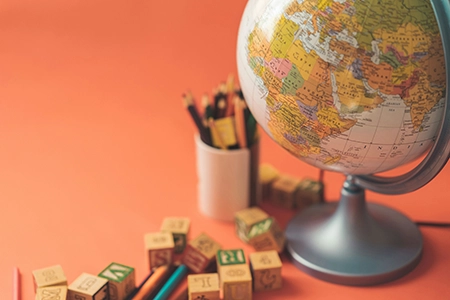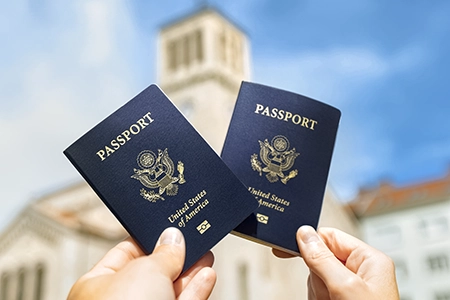In today’s globally connected world, the role of translation in bridging language barriers has never been more crucial. With advancements in technology, the field of translation has undergone a significant transformation, moving beyond traditional methods to embrace digital solutions. This blog post explores the evolution of translation technologies and tools, their current state, and challenges. We will also cast a forward-looking gaze at emerging trends and the potential impact of artificial intelligence in shaping the future of translation. Whether you’re a language enthusiast, a professional translator, or simply curious about the intersection of technology and language, join us as we explore the dynamic landscape of translation technology.
Overview of Modern Translation Technologies
As we delve into the ‘Overview of Modern Translation Technologies’, our first focus is on the ‘Evolution of Translation Tools’. This journey takes us from the early days of bilingual dictionaries and manual phrase translation to the sophisticated digital tools of today. We will explore the significant milestones that have marked the transformation of translation practices over the years. This includes the advent of computer-assisted translation (CAT) tools, the emergence of machine translation engines, and the integration of artificial intelligence, which have collectively revolutionised how we approach language translation. By understanding this evolution, we gain valuable insights into how translation technologies have become indispensable in our increasingly multilingual world and how they continue to adapt to meet changing linguistic needs and challenges.
Evolution of Translation Tools
Translation tools have come a long way, from paper-based dictionaries to computer-assisted translation (CAT) tools like SDL Trados and MemoQ. The emergence of machine translation (MT) systems like Babel Fish and neural machine translation (NMT) systems like Google Translate and DeepL have revolutionised the translation industry. Today, translation tools continue to evolve, incorporating advanced AI algorithms and sophisticated language models, making translation more accessible and accurate than ever before. The evolution of translation tools reflects technological advancement and a deeper understanding of language and communication in a global context.
Current State of Translation Technology
The current state of translation technology represents an unprecedented convergence of linguistic expertise and advanced computational power. Today’s translation tools are not just about converting text from one language to another; they enable effective communication across cultural and linguistic barriers.
One of the most prominent features of modern translation technology is the widespread use of neural machine translation (NMT). NMT systems utilise deep learning algorithms to produce more accurate and contextually relevant translations than ever before. These systems learn from extensive amounts of data, enabling them to understand and translate nuances of language, including idioms and colloquialisms, with increasing accuracy.
Another significant advancement is integrating translation technology into various digital platforms and applications. Real-time translation tools like those offered by Google and Microsoft allow instant translation of web pages, documents, and even live conversations. This integration has made translation more accessible, enabling real-time communication across people who speak different languages.
Translation management systems (TMS) have also become crucial in the current landscape. TMS platforms streamline the translation process for businesses and organisations, handling workflows, project management, and collaboration among translators. This improves efficiency and ensures consistency and quality in large-scale translation projects.
Additionally, the rise of AI-powered language tools has extended beyond text translation. Speech-to-text and text-to-speech technologies are now more sophisticated, enabling more natural and accurate voice translations. This has significant implications for international business, travel, and customer support.
The current state of translation technology is a dynamic and rapidly evolving field. It is driven by the continuous development of more advanced algorithms and the increasing demand for seamless, accurate translation in a globalised world. This technology is transforming how we translate languages and reshaping how we connect and communicate across the globe.
Key Translation Software and Platforms
Machine Translation Systems
Machine Translation Systems (MTS) have evolved from rule-based engines to neural networks. Neural machine translation (NMT) is the current era’s dominant form of MTS, using deep learning and artificial neural networks to model the entire translation process holistically and context-awarely. Specialised systems are tailored for specific needs, such as real-time translation in conversational contexts or industry-specific jargon and terminology. Despite challenges such as handling low-resource languages and preserving cultural nuances, MTS are pivotal in breaking down language barriers and fostering global communication.
Translation Management Systems (TMS)
Translation Management Systems (TMS) are crucial for managing large-scale translation projects. They streamline the translation process by providing a structured framework for workflow management, automated task assignment, and quality control. TMS also integrates translation memory, facilitating consistency and efficiency. Collaboration tools ensure swift issue resolution and adherence to project guidelines. TMS platforms can integrate with other tools, allowing a seamless translation workflow across various digital platforms. Overall, TMS is pivotal in bridging language barriers in the global market.
Challenges and Limitations in Translation Technology
Accuracy and Contextual Challenges
Translation technology has made progress but still faces challenges in accuracy and contextual understanding. Language complexity, context-dependent meanings, and less-resourced languages are primary accuracy challenges. Contextual understanding is limited, particularly in texts requiring cultural nuances, specialised terminology, or complex structures. Maintaining consistency in translations across documents and projects is a challenge. Human expertise is still necessary for deep cultural insight, specialised knowledge, or creative linguistic expression. The future of translation technology lies in enhancing its ability to navigate complex linguistic landscapes with greater precision and sensitivity.
Ethical and Privacy Concerns
Translation technology has raised ethical and privacy concerns. Machine translation can produce inaccurate translations, which can have serious consequences in sensitive areas like healthcare, legal, or government communications. Privacy concerns arise when translated material contains sensitive or personal information and data is stored or used without user consent. Anonymisation of data is a significant challenge, and there is a risk of re-identification. The increasing reliance on machine translation might devalue the role of human translators and potentially lead to job displacement. Clear guidelines and standards for using such technology, robust data protection measures, and a balance between technological advancement and the human element in translation are essential to address these concerns.
The Future of Translation Technology
Emerging Trends in Translation Tech
The field of translation technology is witnessing rapid and exciting changes, with emerging trends that promise to further revolutionise how we approach language translation. These trends reflect technological advancements and shifting market demands, pointing towards a future where translation is more integrated, intuitive, and accessible.
One of the most significant trends is the increasing use of Artificial Intelligence (AI) in translation. AI is improving the quality of machine translations and enabling more sophisticated context analysis and real-time translation capabilities. For instance, AI-powered tools can now better understand and translate idiomatic expressions and cultural nuances, which were traditionally challenging for machine translation.
Another trend is integrating translation technology with other digital technologies, including augmented reality (AR) and virtual reality (VR). This integration offers exciting possibilities, like real-time subtitle translations in AR glasses or immersive language learning experiences in VR environments. Such advancements can significantly enhance communication and learning experiences in multilingual contexts.
The rise of voice translation technology is also noteworthy. With speech recognition and processing improvements, real-time spoken language translation is becoming more accurate and reliable. This advancement is particularly beneficial in scenarios like international meetings, travel, or customer service interactions, where quick and accurate spoken language translation is essential.
Collaborative translation tools are gaining traction as well. These tools enable multiple translators to work together on a single project in real-time, enhancing efficiency and consistency. They also facilitate greater interaction and exchange of ideas among translators, which can improve translation quality.
Finally, translation technology has a growing emphasis on customisation and personalisation. This means developing tools that adapt to industry needs or personal language preferences: for example, specialised translation tools for medical, legal, or technical fields that understand and accurately translate industry-specific terminologies.
In conclusion, these emerging trends in translation technology are shaping a future where language barriers are increasingly diminished. They represent a blend of technological innovation and a deepening understanding of language as a tool for connection, opening new avenues for global interaction and communication.
The Role of Artificial Intelligence in Future Developments
Artificial Intelligence (AI) is set to play a transformative role in the future of translation technology, marking a new era of possibilities and advancements. AI’s potential in reshaping translation is vast, with implications that extend far beyond mere word-for-word conversion.
One of the most exciting prospects is the enhancement of machine translation accuracy. AI algorithms, those based on deep learning and neural networks in particular, are continuously improving in their ability to understand and replicate human language nuances. This means future machine translations will likely be more fluent, contextually appropriate, and culturally sensitive, closely mirroring human translation quality.
AI is also expected to facilitate real-time translation more efficiently. Future developments could see instant translation devices becoming more commonplace and accurate, enabling seamless communication between speakers of different languages in real time. This would be particularly impactful in international business, travel, and diplomatic interactions.
Another area where AI could make significant strides is in personalised translation experiences. AI systems could be tailored to individual language styles and preferences, offering more personalised and user-centric translation solutions. This custom approach could benefit educational settings or personalised content consumption.
The role of AI in improving accessibility through translation technology cannot be overlooked. Future AI-driven translation tools could provide more effective support for people with disabilities, such as translating sign language in real-time or providing better contextual translations for those with cognitive impairments.
Moreover, AI is poised to enhance the efficiency of Translation Management Systems (TMS), automating more aspects of the translation workflow and providing more sophisticated project management tools. This could lead to faster turnaround times and higher productivity in professional translation settings.
However, with these advancements comes the responsibility to address ethical considerations. Future developments must ensure that AI in translation respects user privacy and data security and maintains the ethical use of AI technologies.
In conclusion, the role of AI in the future of translation technology is foundational and far-reaching. It promises to enhance existing translation processes and open up new frontiers in how we understand and interact with language in a diverse and connected world.

Before you go…
Looking for superior human translation services that are fast, precise, and budget-friendly? Look no further! We offer top-notch translation solutions at unbeatable rates. Contact us now to get a quote and let us help you communicate effectively in any language.



